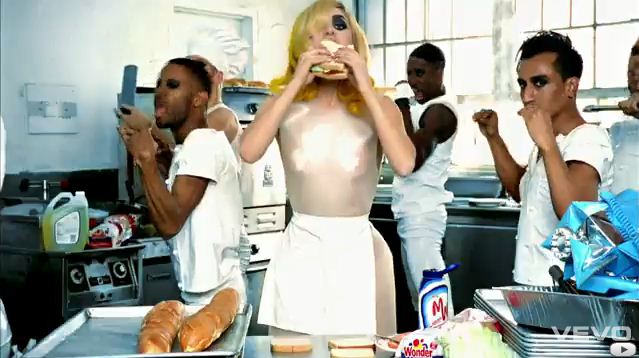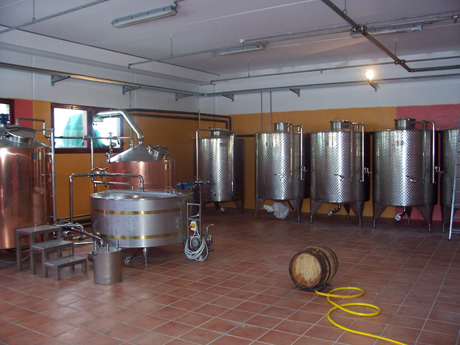Clockwise: Mural of a mountain goat and cow outside Fratelli Lussiana creamery, fresh wheels of cevrin in warm room, foothills of Piedmont, aging wheels of cevrin in cold room
A couple weeks ago while on the Piedmont stage, our class visited Fratelli Lussiana creamery, a cheese producer in Giaveno, about 35 km west of Turin. The primary cheese they produce is cevrin di Coazze, made with half goat and half cow’s milk and aged for 3 months. At the time, I was tired, hot and not in the mood to see yet another farm, but we all fell headlong in love with this cheese producer. After showing us an overview of the cheesemaking process and aging rooms, the lovely Lussiana siblings piled us into a hay-filled tractor and trundled us up a narrow, rocky mountain path, while we tried to keep our balance, yodeled and ducked under overhanging tree branches. Once we reached the mountaintop farm, we were greeted by a herd of seriously dexterous goats, placidly ruminating cows, and the friendliest donkey in the world (who kept sneaking into photos and nuzzling for attention). The farm caretakers welcomed us with fresh wheels of cevrin, salame, bread and red wine, and we ate cheese next to the animals who produced the milk for it, as the sun went down over the Italian Alps. It was one of the best days of my life.
Determined to recapture some of that high, some of my classmates decided to contact Fratelli Lussiana and ask if they would allow us to return for a second visit. Only, this time we wanted to see the cevrin making process, which happens every morning at 6 am. With the 90 minute drive from Bra, this meant that we would be setting out on a 4:30 am road trip. Totally worth it!
After duly waking up at a rather uncivilized hour, the first challenge was figuring out how to get back to the creamery. We were armed with an address of questionable accuracy (the GPS was telling us to go to a different town) and also a phone number. To complicate matters, no one present was terribly fluent in Italian. So, over the next hour, we called three times, and using an amalgamation of broken Italian and French, managed to get within a few streets of the creamery. As we drove through Giaveno, desperately looking for familiar landmarks, we spotted an elderly gentlemen walking briskly down the street. I rolled down a window and asked him for directions to Fratelli Lussiana, and he broke into a toothy grin and began to wave wildly. Seeing our blank reactions, the man said, “You know what, I’d better just point out the way myself, do you mind if I hop in the car?” And before I knew it, I was scooting to make room for a swarthy Italian man in the backseat. We explained that we were students at the University of Gastronomic Sciences, interested in cheesemaking, and he said “Ah yes, of course! Who do you know of the Lussiana brothers? Oh Luigi, yes I know Luigi!” Within a few minutes, he had steered us to the creamery. We thanked him for his help and asked if he needed a ride back. “No no, I walk a lot, 20 km a day! I’ll be just fine.” He stuck his head into the barn to say hello to Luigi, and sauntered off back into town.
Continue reading Hiking and Ruminating the Italian Alps







